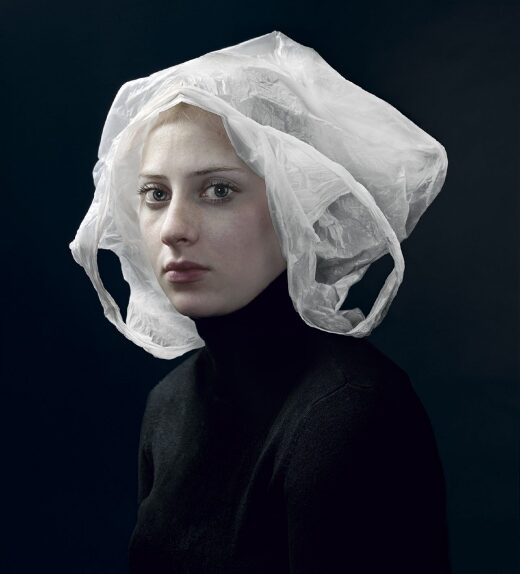In the 17th century Dutch painters began to create informal paintings that focused on the features and/or expressions of anonymous people. These were called tronies. Although a tronie showed a person’s face, it wasn’t considered to be a portrait. A portrait, in that era, was a commissioned painting that displayed an often idealized likeness of a person of a certain social position. A portrait was almost always entitled with the subject’s name and was intended to be preserved for posterity. After all, a person who could afford to have a portrait painted was a person of stature and their portrait, even if it appeared informal, was an expression of their social status.
A tronie, on the other hand, wasn’t a commissioned work. Rather, they were the painter’s informal personal projects. They gave the painter an opportunity to experiment, to work on different sorts of facial expressions, to try new techniques. Tronies, unlike commissioned portraits, were generally given generic titles, like Rembrandt’s An Oriental or Vermeer’s Girl with a Pearl Earring. However, because tronies were generic they were also less expensive to buy, making them popular with the Dutch middle classes, giving artists a wider market.
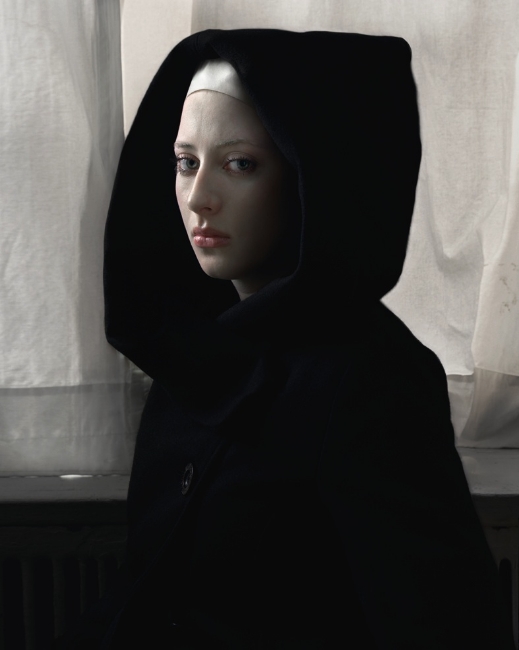
Hendrik Kerstens was a cheese importer in Den Hague who took up photography after the birth of his daughter, Paula. Over time, his documentary photos of Paula grew into something more defined. And then in 1995:
“One day Paula came back from horseback riding. She took off her cap and I was struck by the image of her hair held together by a hair-net. It reminded me of the portraits by the Dutch masters and I portrayed her in that fashion. After that I started to do more portraits in which I refer to the paintings of that era.”
Kerstens began a series of tronies featuring Paula. Although the individual images are given generic titles (in keeping with the tronie tradition and identifying what Paula is wearing), the entire series is named for his daughter: Paula Pictures. This series won the prestigious PANL Award (Photographers Association of the Netherlands).
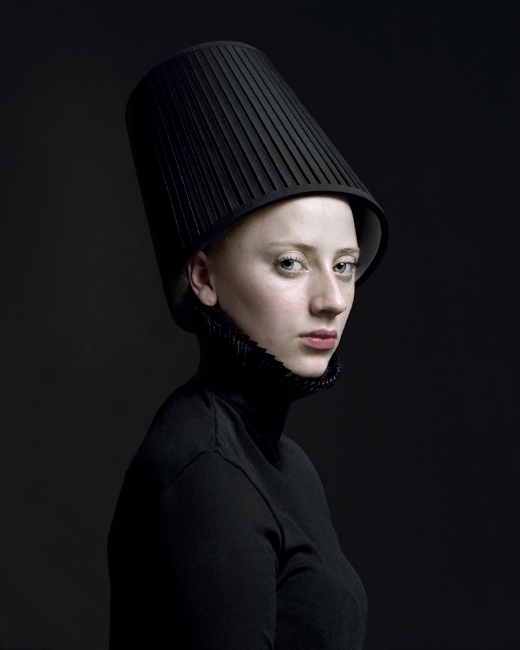
Paula was more that merely the model of greatest convenience. It was his great luck to father a child with such a classic Dutch face. Although Kerstens has photographed other people, his best work–and certainly his most successful gallery showings–features Paula. Despite the fact that she’s his daughter, Kerstens has stated he can never truly know her–neither as a parent nor as a photographer. But he can approach her as a photographer and with a photographer’s eye.
Kerstens frequently re-creates the sorts of poses and the angles of illumination found in the work of the Dutch master painters. There is a subtlety of light at work here, a delicacy of tone that is altogether painterly. Kerstens’ interest in 17th century painting is grounded in its celebration of the ordinary. He says it “can be read as a description of everyday life, as opposed to the paintings of the Italian Renaissance, which usually tell a story.” He is also intrigued by the pre-eminence of craftsmanship over sentiment during that era, and his photographs reflect that. His work is almost scholarly in approach; cool, detached, disciplined.
The image below is as much about light and line as it is about Paula. Kerstens focuses on the technical aspects of the image, which results in a sort of impersonal, austere beauty. The way her face is illuminated is as studied and formal as the studies of light found in still life paintings.
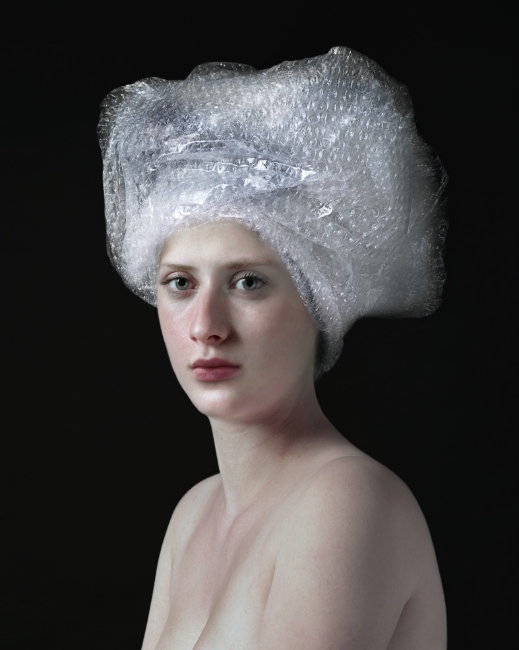
Even when modern artifacts are included, the images retain an aura of antiquity. Through his control of light Kerstens is able to turn a hoodie into a wimple, a plastic shopping bag into a traditional Dutch bonnet, a lampshade into a formidable and formal hat. The photograph below is almost like a lesson in how to use light to create beauty. Yet Kerstens maintains that his work isn’t about beauty; he says the contradiction between beauty and ugliness “disappears the moment the soul is touched.” His work, he has said, is about the soul.
I’m not sure how Kerstens reconciles his fascination with craftsmanship and his notion that his work is about the soul. I’m not sure I see much of the soul in his photography. I’m not sure what the soul is, or even if it exists. But I recognize beauty, and it’s here in abundance.
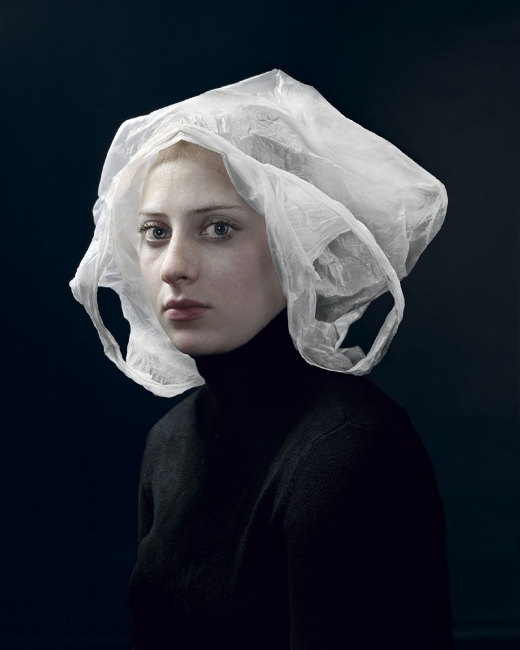
I’m very much taken by these photographs. They’re so simple, so still, and so intimate. But I can’t help wondering–would they be as successful with another model? Would they work as well without the heavy-lidded intensity and clarity of Paula’s gaze, staring directly into the lens, directly at the viewer?
I’m inclined to think there’s a special, intangible alchemy at work here. The relationship between father and daughter, between photographer and model, between past and present, between tradition and modernity, between craft and art, between light and shadow–they all seem to have coalesced in this series of images.
I don’t know–maybe Kerstens is is right; maybe these photographs really are about the soul.

